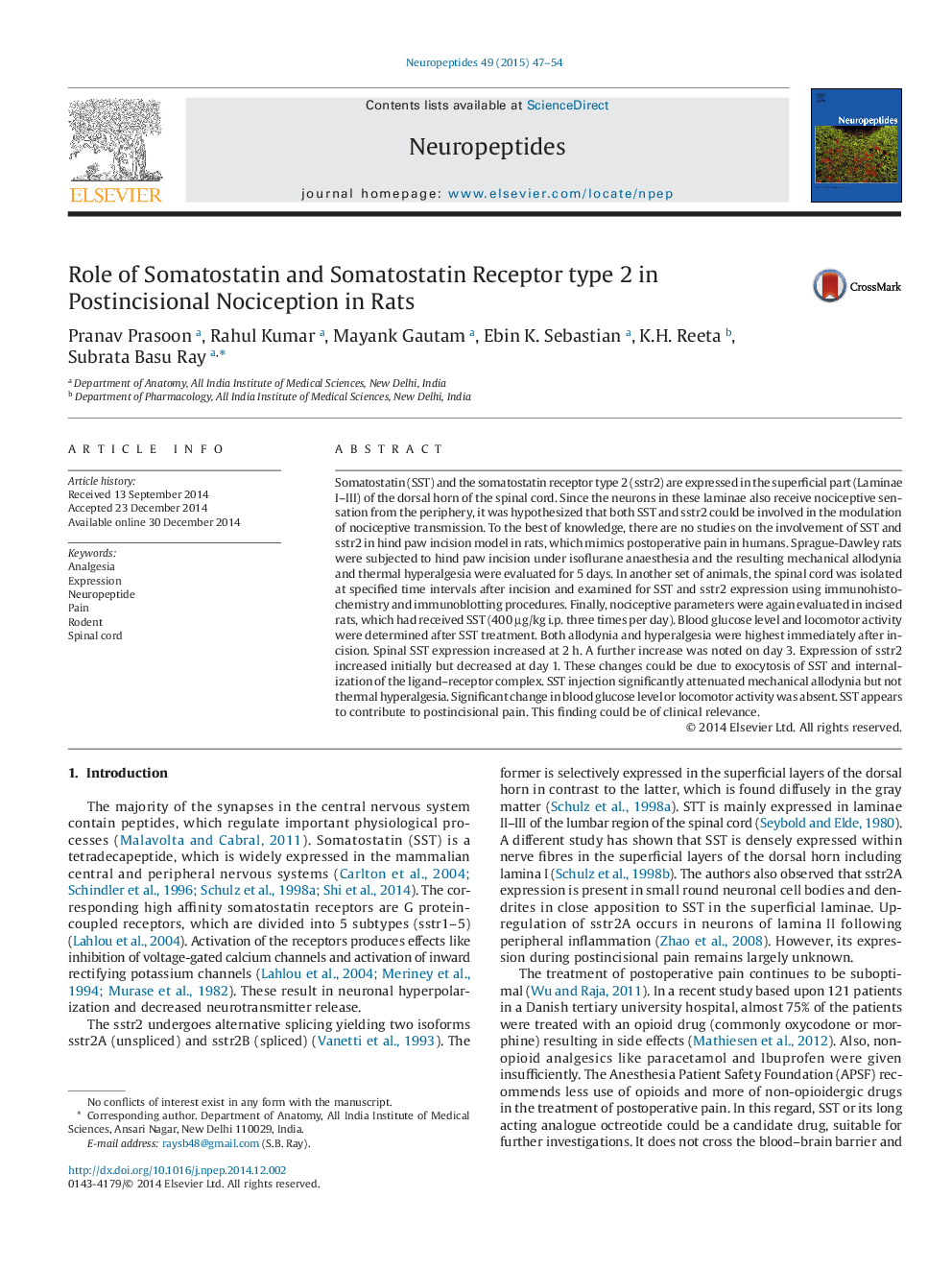| کد مقاله | کد نشریه | سال انتشار | مقاله انگلیسی | نسخه تمام متن |
|---|---|---|---|---|
| 2808025 | 1569073 | 2015 | 8 صفحه PDF | دانلود رایگان |
• Hind paw incision in rats resulted in both mechanical allodynia and thermal hyperalgesia.
• Expression of somatostatin and the somatostatin receptor type 2. varied with the time post-incision, indicating possible involvement in nociception.
• Somatostatin injection (400 µg/kg three times daily) attenuated mechanical allodynia over a five day period. This finding could have clinical relevance.
Somatostatin (SST) and the somatostatin receptor type 2 (sstr2) are expressed in the superficial part (Laminae I–III) of the dorsal horn of the spinal cord. Since the neurons in these laminae also receive nociceptive sensation from the periphery, it was hypothesized that both SST and sstr2 could be involved in the modulation of nociceptive transmission. To the best of knowledge, there are no studies on the involvement of SST and sstr2 in hind paw incision model in rats, which mimics postoperative pain in humans. Sprague-Dawley rats were subjected to hind paw incision under isoflurane anaesthesia and the resulting mechanical allodynia and thermal hyperalgesia were evaluated for 5 days. In another set of animals, the spinal cord was isolated at specified time intervals after incision and examined for SST and sstr2 expression using immunohistochemistry and immunoblotting procedures. Finally, nociceptive parameters were again evaluated in incised rats, which had received SST (400 µg/kg i.p. three times per day). Blood glucose level and locomotor activity were determined after SST treatment. Both allodynia and hyperalgesia were highest immediately after incision. Spinal SST expression increased at 2 h. A further increase was noted on day 3. Expression of sstr2 increased initially but decreased at day 1. These changes could be due to exocytosis of SST and internalization of the ligand–receptor complex. SST injection significantly attenuated mechanical allodynia but not thermal hyperalgesia. Significant change in blood glucose level or locomotor activity was absent. SST appears to contribute to postincisional pain. This finding could be of clinical relevance.
Journal: Neuropeptides - Volume 49, February 2015, Pages 47–54
